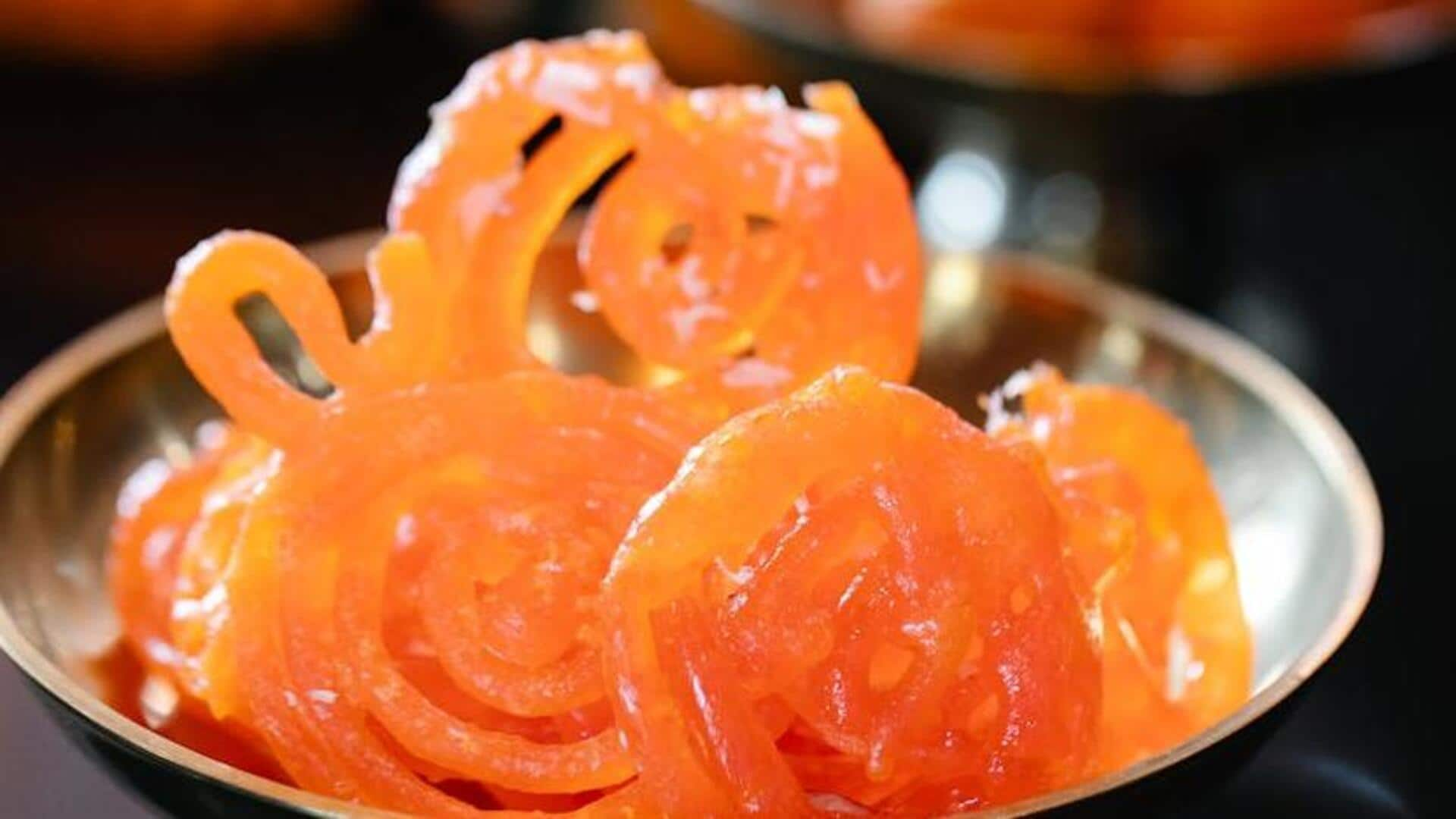
Discover jalebi's delicious journey: History and regional variations
What's the story
A popular dessert, jalebi has a rich cultural history. The spiral-shaped, sweet, syrupy dessert originated in the Indian subcontinent and is believed to have been inspired by similar Middle Eastern desserts. Over the years, jalebi has become a staple in various festivals and celebrations across South Asia. Its unique preparation method and distinct flavor have contributed to its widespread popularity beyond its place of origin.
History
Historical roots of jalebi
The history of jalebi dates back a few centuries. It was reportedly brought to the Indian subcontinent by Persian traders/invaders. The dessert was originally known as 'zalabiya' in Arabic and 'zalibiya' in Persian. Over the years, it morphed into what we know as jalebi today. The transformation is a testimony to the mingling of cultures and culinary practices over the years.
Popularity
Jalebi's global appeal
Thanks to globalization and migration, jalebi's appeal has crossed borders. It has now become a popular delicacy in several countries around the world, especially those with large South Asian communities such as the United States, Canada, and United Kingdom. Its sweet taste and crispy texture make it a favorite among dessert lovers all over the world.
Diversity
Variations across regions
Different regions have adapted jalebi to locals' taste and liking, further highlighting the dessert's versatility. In India, chefs often add saffron or cardamom to the batter for an additional flavor. Meanwhile, some Middle Eastern countries have created similar desserts, which, although made with different ingredients, maintain the iconic spiral and syrupy sweetness of jalebi. This adaptation emphasizes the world's love and variation of this favorite sweet.
Preparation tips
Making jalebi at home
Making jalebi at home is a precise task but can be worth it for those who love cooking traditional sweets. Essential ingredients include flour, yogurt or curd for fermentation, sugar syrup flavored with saffron or cardamom, and ghee for frying. Ensuring that the batter ferments the right way is essential for getting the right texture when fried into spirals and soaked in syrup.